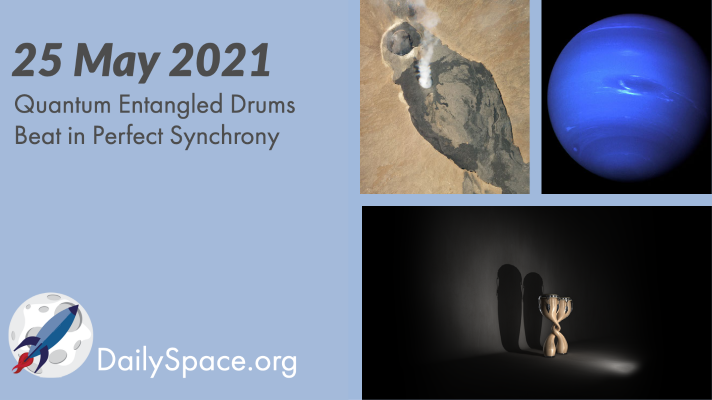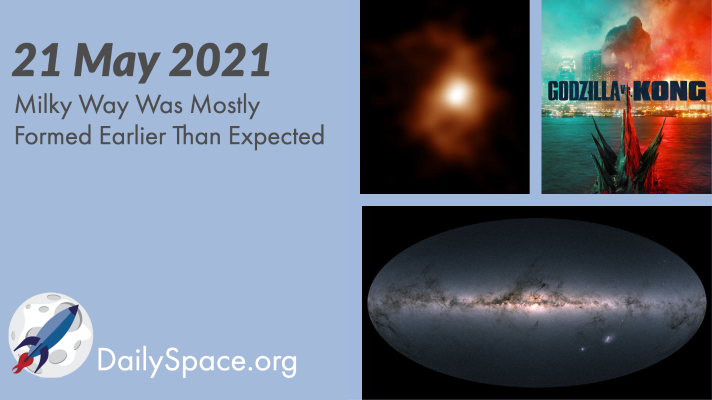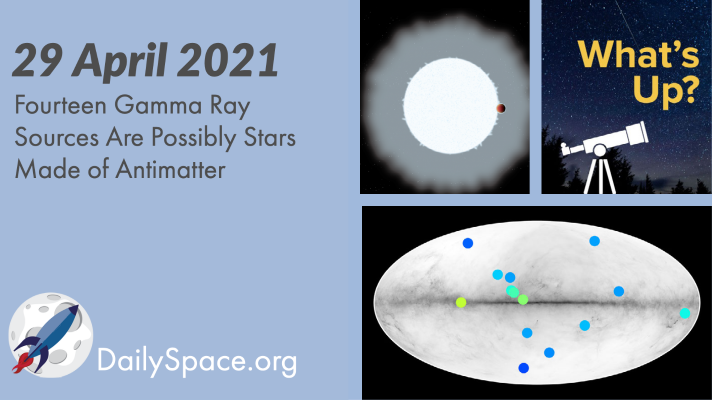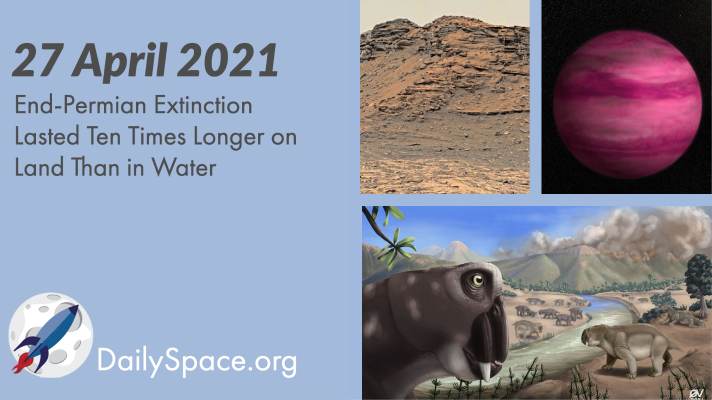
May 26, 2021 | Daily Space, Earth, Galaxies, KBOs, Mars, Moon, Neptune, Physics, Quantum, Rovers, Uranus, Zhurong
Physicists have built a pair of microscopic drums and, through quantum entanglement, have found they beat together in perfect synchrony. Plus, dwarf galaxies, China’s Zhurong rover, the East African Rift, and more about ice giants.

May 24, 2021 | Astrobiology, Climate Change, Comets, Daily Space, Earth, Fast Radio Bursts, Galaxies, Milky Way, Moon, Review, The Sun
New research shows that our galaxy was already in place prior to a major collision with a dwarf galaxy ten billion years ago. Plus, meteor showers, fast radio bursts, tardigrades, climate change, and a science review of Godzilla vs. Kong. No. Really!

May 21, 2021 | Climate Change, Comets, Daily Space, Earth, Mars, Moon, Neutron Stars / Pulsars, Rovers, Sky Watching, Space China, Zhurong
After a successful touchdown on Mars last week, the Zhurong lander has sent back both black and white and color images. Plus, pulsars, ocean depths, heavy metal vapor, radioactive elements, and this week’s What’s Up which includes a total lunar eclipse!

May 7, 2021 | Active Galaxies, Earth, Exoplanets, Moon, Spacecraft, Star Forming Region, Supernovae, Very Large Array
Researchers find that the “oddball supernova” of a curiously cool, yellow star was lacking the hydrogen content expected, “stretching what is physically possible.” Plus, finding potentially habitable planets, a gamma-ray burst, ash clouds, and a new lunar map in this week’s What’s Up.

Apr 30, 2021 | Asteroids, Daily Space, Exoplanets, Mars, Milky Way, Moon, Sky Watching, Stars
Gamma rays given off by fourteen different sources in our sky could be a sign of the existence of antistars, leading to the potential for breaking the standard cosmological model. Plus, nano dust, the HI-SEAS experiment, hydroxyl at an exoplanet, and this week’s What’s Up.

Apr 29, 2021 | Astrobiology, Climate Change, Cosmology, Curiosity, Daily Space, Dark Matter, Earth, Mars, Moon, Space History, Stars, Supermassive Black Holes
The biggest mass extinction event on Earth occurred at the end of the Permian period, resulting in the extinction of 95% of marine life and 80% of terrestrial life. Now, scientists have found that the terrestrial portion of the event lasted nearly ten times as long as the ocean version. Plus, a spaghettified star, the search for Moon Trees, all about Mars, and new works on dark matter and dark energy.








 We record most shows live, on Twitch. Follow us today to get alerts when we go live.
We record most shows live, on Twitch. Follow us today to get alerts when we go live.